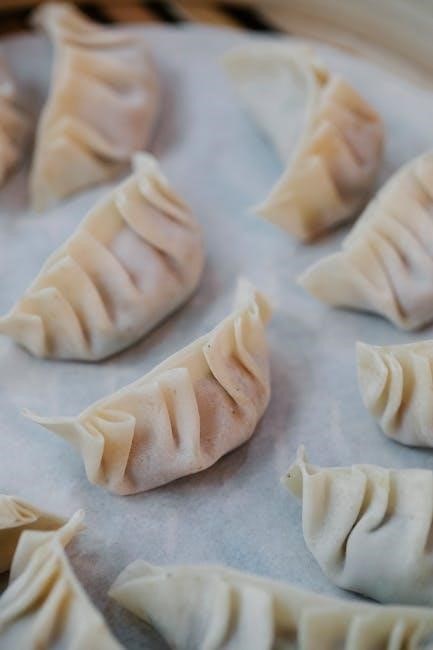
Costco Prime Rib: Cooking Instructions
Cooking a Costco prime rib can be straightforward. Begin by preheating your oven. Consider the traditional roasting method‚ ensuring proper temperature and timing.
What is Costco Prime Rib?
Costco’s Prime Rib is a cut of beef‚ known for its flavor and tenderness. Specifically‚ it’s a ribeye roast sourced from Black Angus cattle. It’s recognized for its succulent taste and generous marbling.
This type of beef roast comes from high-quality cuts of meat. The “prime rib” designation indicates a superior grade‚ promising a richer‚ more flavorful experience. The marbling‚ or intramuscular fat‚ contributes significantly to the tenderness and juiciness of the roast.
When you purchase a prime rib from Costco‚ you’re getting a cut that is well-suited for special occasions. The generous size and impressive presentation make it ideal for holiday dinners and celebratory feasts; Due to its rich flavor and tender texture‚ it is a popular choice for those looking to impress.
Costco Prime Rib Prices
The price of Costco’s seasoned prime rib generally hovers around $20.79 per pound. Each pack usually weighs between 7 to 12 pounds. Therefore‚ expect to pay roughly between $150 and $250‚ depending on the specific weight.
Interestingly‚ the price per pound has seen some fluctuations. Two years prior‚ it was approximately $21 per pound. So this year‚ the price is a little cheaper.
Keep in mind that prices can vary slightly depending on location and seasonal promotions. It’s always a good idea to check with your local Costco for the most accurate and up-to-date pricing information. Despite these minor variations‚ Costco’s prime rib offers a competitive value‚ considering the quality and size of the cut. This makes it an attractive option for those seeking an impressive centerpiece for their meals without breaking the bank.
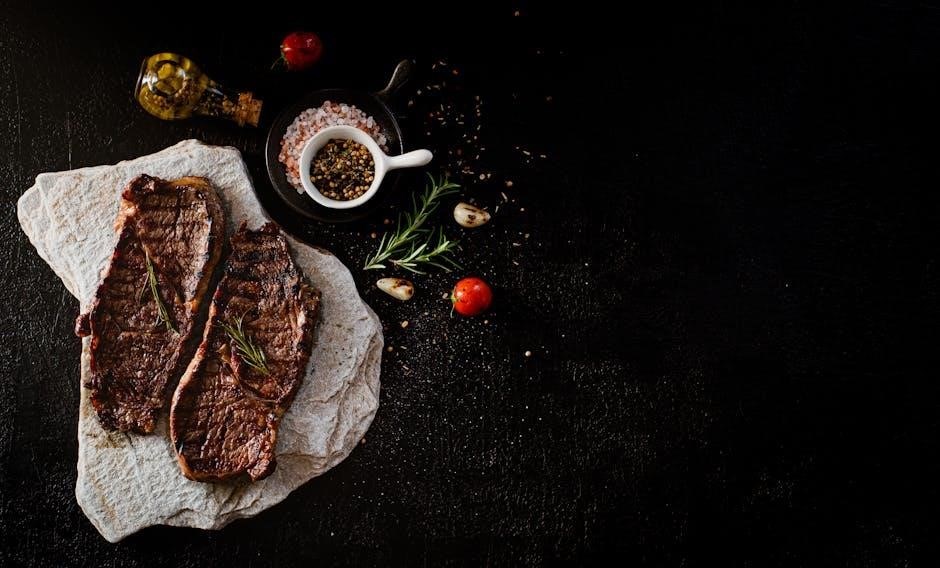
Traditional Oven Roasting Method
Roasting in the oven is a classic way to cook prime rib. Proper preheating and temperature control are crucial for achieving the desired doneness.
Preheating and Initial Sear
The initial sear is vital for a flavorful crust. Preheat your oven to a high temperature‚ around 450°F to 500°F (232°C to 260°C). Pat the prime rib dry with paper towels before seasoning. Rub the roast with olive oil‚ salt‚ and pepper or your preferred seasoning blend. Place the prime rib in a shallow roasting pan.
For the initial sear‚ cook the prime rib at the high temperature for a specific time. A common recommendation is five minutes per pound to lock in the juices. This high heat helps to create a rich‚ brown crust on the exterior of the roast. Ensure the roasting pan is on the center rack of the oven.
Monitor the roast carefully during this initial searing phase. This step sets the stage for the rest of the cooking process‚ so it’s essential to get it right.
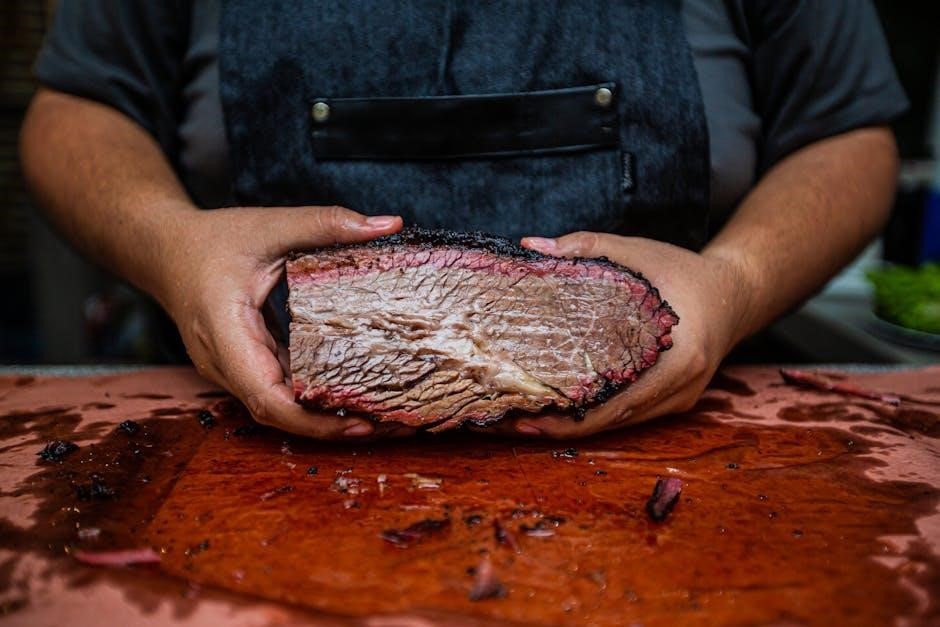
Reducing Heat and Roasting Time
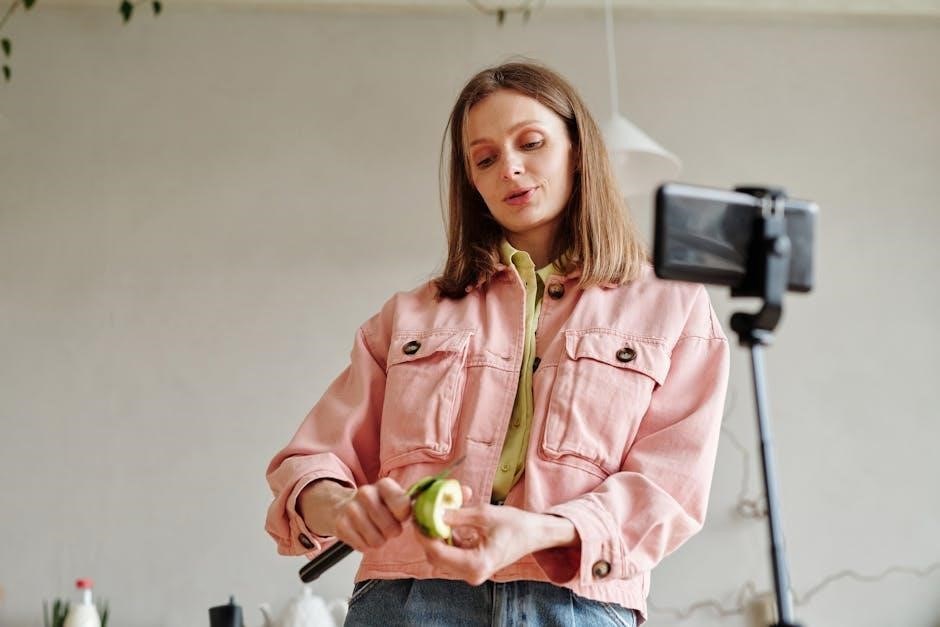
After the initial sear‚ reduce the oven temperature to ensure even cooking. A lower temperature‚ around 325°F (163°C) to 350°F (177°C)‚ is generally recommended. This prevents the outside from cooking too quickly while the inside remains undercooked.
Calculate the roasting time based on the weight of the prime rib and your desired level of doneness. A general guideline is about 13 minutes per pound for medium-rare. Use a meat thermometer to monitor the internal temperature. For rare‚ aim for 115°F (46°C); for medium-rare‚ aim for 120°F (49°C) to 130°F (54°C).
Continue to cook the roast‚ checking the internal temperature periodically. Remember that the internal temperature will continue to rise slightly as the roast rests.
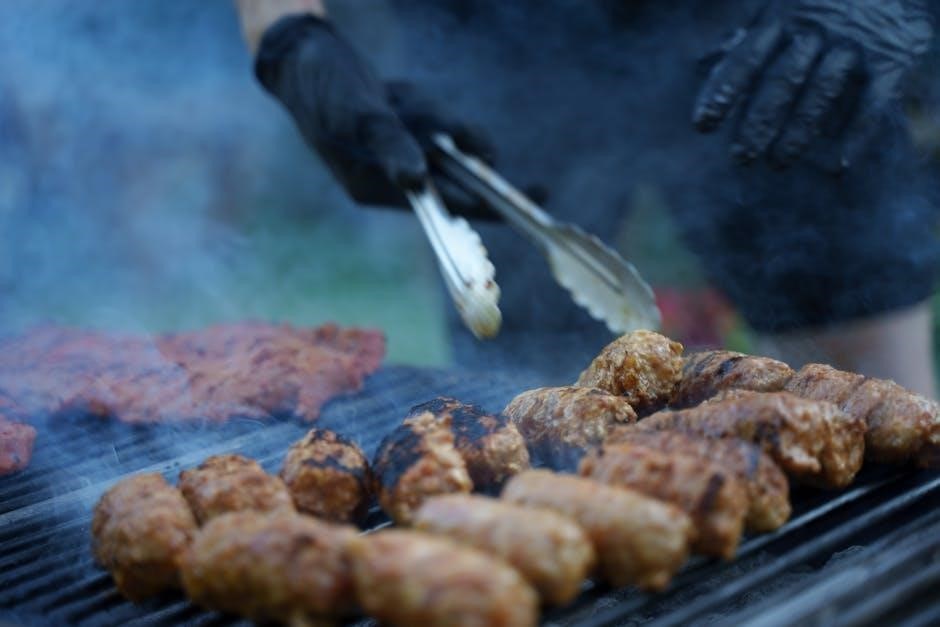
Resting the Prime Rib
Resting the prime rib after roasting is crucial for achieving a juicy and tender result. Once the roast reaches your desired internal temperature‚ remove it from the oven. Tent it loosely with foil‚ allowing it to rest for at least 20 to 30 minutes.
During this resting period‚ the juices redistribute throughout the meat‚ resulting in a more flavorful and evenly moist roast. If you cut into the prime rib immediately after removing it from the oven‚ the juices will escape‚ leaving the meat dry.
The internal temperature will continue to rise slightly during the resting period‚ typically by about 5 to 10 degrees Fahrenheit. This is called carryover cooking. Account for this when determining your target internal temperature.
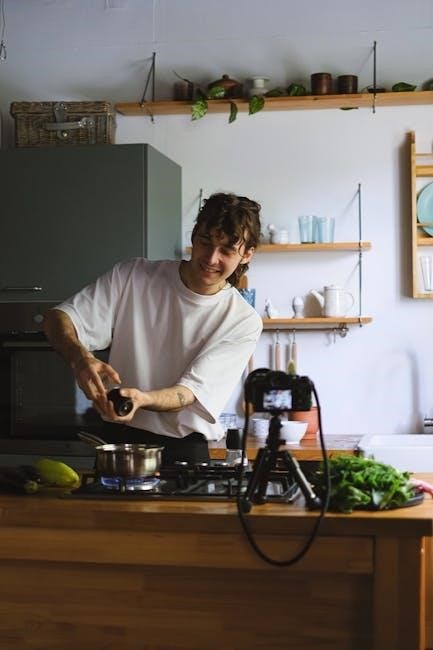
Reverse Sear Method
The reverse sear method involves slow-cooking the prime rib at a low temperature‚ followed by a quick sear at high heat to develop a flavorful crust.
Low-Temperature Cooking
The initial phase of the reverse sear method focuses on gently bringing the prime rib to its target internal temperature. This low and slow approach ensures even cooking throughout the roast‚ minimizing the gray band that can occur with traditional high-heat roasting. Preheat your oven to a low temperature‚ typically around 225°F (107°C).
Place the seasoned prime rib on a rack in a roasting pan. The rack allows for better air circulation‚ promoting even cooking. Insert a meat thermometer into the thickest part of the roast‚ avoiding bone if present. Monitor the internal temperature carefully‚ aiming for about 115°F (46°C) for rare‚ 120°F (49°C) for medium-rare‚ or slightly higher for more well-done preferences.
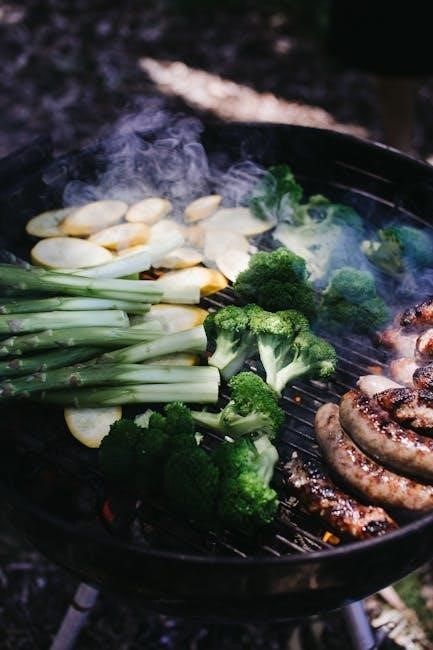
This slow cooking process can take several hours‚ depending on the size of the roast. Patience is key here. The goal is to gradually increase the internal temperature without overcooking the outer layers. Once the desired internal temperature is reached‚ remove the prime rib from the oven.
Searing for Crust
After the low-temperature cooking‚ the prime rib will be evenly cooked but lack a desirable crust. The searing process is crucial for developing a rich‚ flavorful exterior. Preheat a cast-iron skillet or heavy-bottomed pan over high heat until it’s smoking hot. A hot pan is essential for achieving a good sear.
Lightly coat the prime rib with oil. Carefully place the roast in the hot pan‚ searing all sides‚ including the top and bottom. Aim for about 2-3 minutes per side‚ creating a dark brown crust. This step requires close attention to prevent burning. Use tongs to rotate the roast and sear each surface evenly.
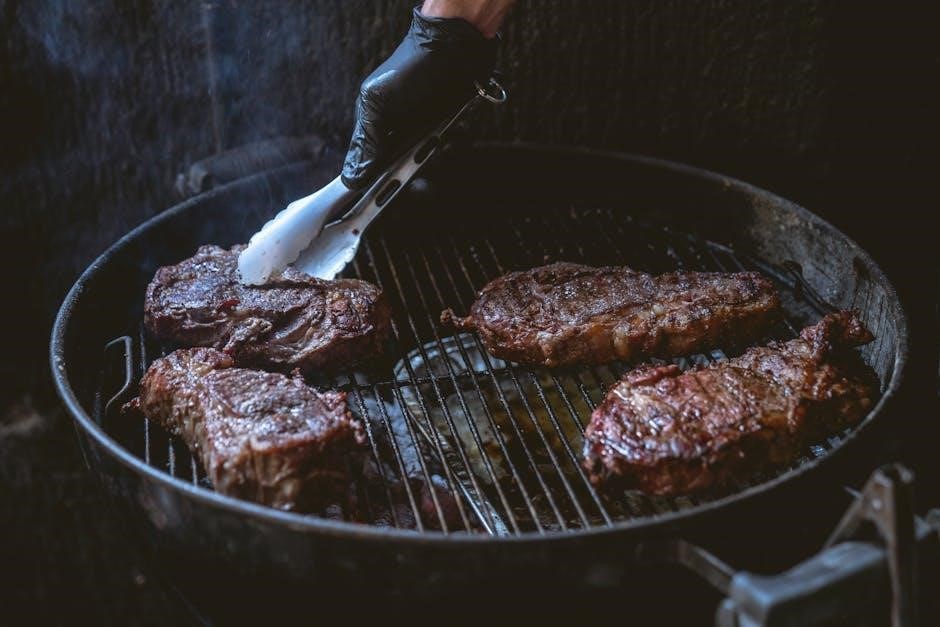
Alternatively‚ you can sear the prime rib under a broiler. Place the roast on a baking sheet and broil for a few minutes per side‚ watching carefully to avoid burning. The high heat will quickly create a beautiful crust. Once seared‚ remove the prime rib from the heat and let it rest before carving.
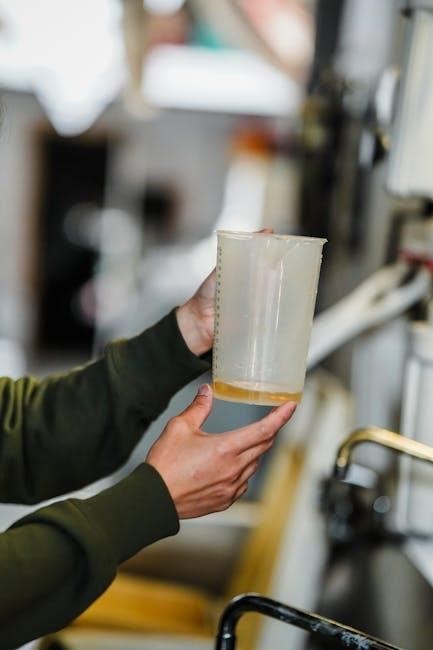
Smoking Method
Smoking a prime rib imparts a unique flavor. Consider using hickory or cherry wood. Maintain a smoker temperature of 250°F. Smoke for approximately 20-25 minutes per pound for best results.
Smoker Temperature and Wood Choice
Achieving the perfect smoked prime rib hinges significantly on maintaining the correct smoker temperature and selecting the right type of wood. A consistent temperature is crucial for even cooking and optimal smoke penetration. A temperature of 250°F (121°C) is generally recommended for smoking prime rib‚ as it allows the meat to cook slowly‚ rendering the fat and infusing it with smoky flavor without drying it out.
The choice of wood also plays a vital role in the final taste profile. Hickory and cherry woods are popular choices‚ each imparting a distinct flavor. Hickory offers a strong‚ classic smoky taste that complements beef exceptionally well. Cherry wood‚ on the other hand‚ provides a sweeter‚ fruitier smoke that adds a layer of complexity to the prime rib. Experimenting with different wood types can help you discover your preferred flavor profile. Other options include oak‚ which provides a medium smoky flavor‚ and applewood‚ which offers a milder‚ sweeter smoke. Consider the intensity of the smoke you desire when making your selection.
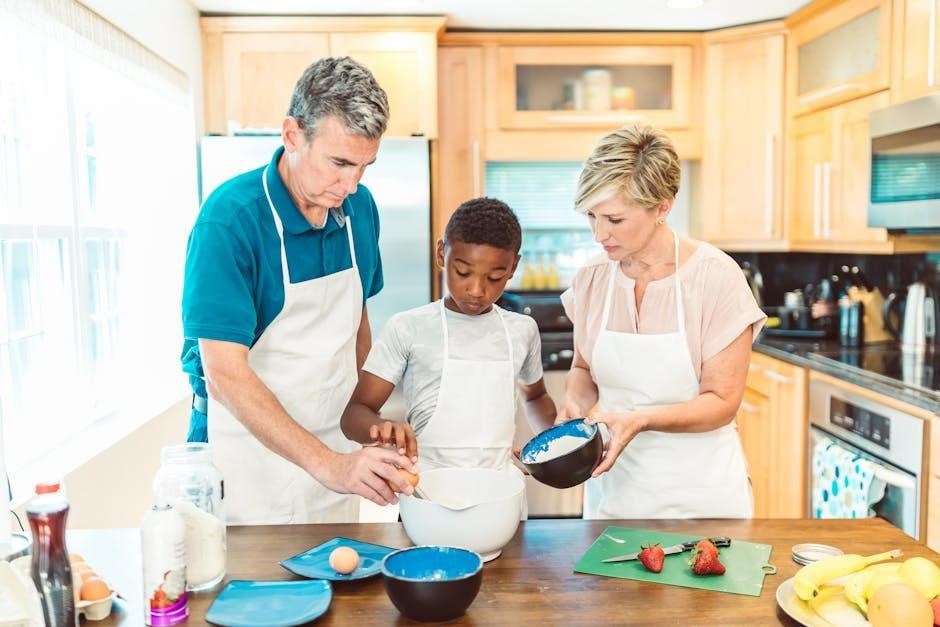
Smoking Time
Determining the precise smoking time for your Costco prime rib is crucial for achieving the desired level of doneness and smoky flavor. The general rule of thumb is to smoke the prime rib for approximately 20 to 25 minutes per pound at a consistent smoker temperature of 250°F (121°C). However‚ this is just an estimate‚ and the actual smoking time may vary depending on factors such as the size and shape of the roast‚ the efficiency of your smoker‚ and your preferred level of doneness.
It is essential to use a reliable meat thermometer to monitor the internal temperature of the prime rib throughout the smoking process. Insert the thermometer into the thickest part of the roast‚ avoiding contact with any bones. Aim for an internal temperature of 115°F (46°C) for rare‚ 120°F (49°C) to 130°F (54°C) for medium-rare‚ or 130°F (54°C) to 140°F (60°C) for medium. Remember that the internal temperature will continue to rise slightly even after you remove the prime rib from the smoker‚ a process known as carryover cooking.